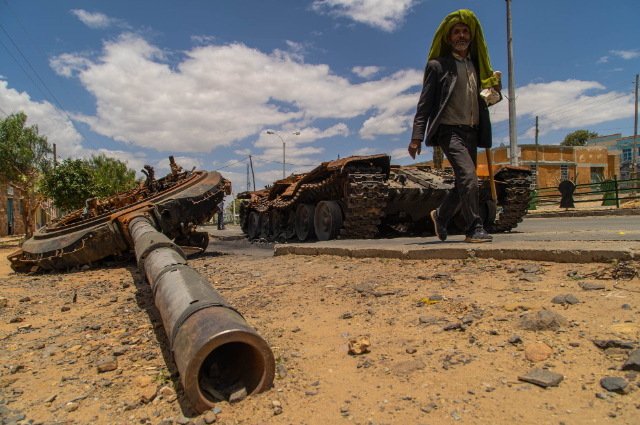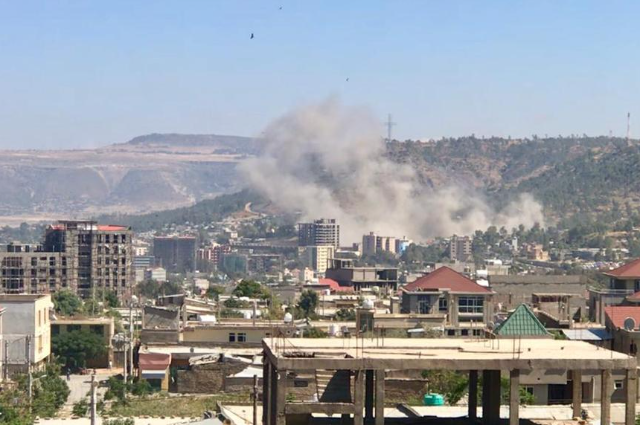Introduction:
This comprehensive analysis of the Tigray conflict aims to delve extensively into the origins of the conflict, navigating the historical nuances of Ethiopia, the ascent of the Tigray People's Liberation Front (TPLF), and the subsequent tensions that have evolved into a multifaceted crisis in the Horn of Africa.
Historical Context:
The feudal era, characterized by concentrated power and land among noble families, left an indelible imprint on Tigray, shaping its socio-economic landscape. The subsequent overthrow of Emperor Haile Selassie in 1974 ushered in the Marxist-Leninist Derg regime, initiating radical reforms like land redistribution and industrial nationalization. However, this period was marred by authoritarianism and human rights abuses. The Ethiopian Civil War (1974-1991) saw the rise of rebel groups like the TPLF, originating in the early 1970s. The TPLF played a pivotal role in the resistance against the Derg, eventually contributing to the overthrow of the regime in 1991. Post-civil war, the TPLF held significant sway within the ruling coalition, the Ethiopian People's Revolutionary Democratic Front (EPRDF), but tensions escalated with other ethnic groups, sparking demands for political reforms. The Grand Ethiopian Renaissance Dam (GERD) dispute with Egypt and Sudan heightened regional tensions, diverting attention and resources away from internal issues. The present Tigray conflict, initiated by the Ethiopian government in 2020, signifies a culmination of historical grievances, power struggles, and ethnic tensions.
The Rise of the TPLF:
The EPRDF emerged as a response to the oppressive rule of the Derg and sought to establish a more inclusive and representative political order in Ethiopia. The EPRDF comprised various rebel groups, each representing different ethnic and regional interests, united by a common goal of ending the Derg's authoritarian rule The EPRDF's formation was a result of negotiations and collaboration among several ethnic-based rebel groups, including the Amhara Democratic Movement (ADM), the Oromo Liberation Front (OLF), and the Southern Ethiopian People's Democratic Movement (SEPDM). These groups came together to create a united front against the Derg, with a shared vision of establishing a more inclusive and decentralized political system that recognized and accommodated Ethiopia's diverse ethnic and regional identities. After the Derg's fall in 1991, the EPRDF played a central role in the transitional government. The coalition introduced significant political reforms, including the adoption of ethnic federalism as a guiding principle. This system aimed to address historical grievances by granting regional autonomy to ethnically defined states, with the goal of balancing centralized authority with local self-governance.
Tensions and Power Dynamics:
The introduction of ethnic federalism in Ethiopia, initially conceived as a response to historical grievances and a means of fostering inclusivity, ultimately planted the seeds of ethnic tensions that would later emerge as a significant challenge. Envisioned as a framework to recognize and address the diverse ethnic identities within the country, ethnic federalism granted regional autonomy based on ethnicity. However, this approach, while aiming to rectify past injustices and provide marginalized groups with a sense of self-governance, inadvertently fueled a complex web of inter-ethnic strife and power imbalances. The prolonged dominance of the Tigray People's Liberation Front (TPLF) within the Ethiopian People's Revolutionary Democratic Front (EPRDF), the ruling coalition, led to allegations of authoritarianism, corruption, and human rights abuses. Ethnic diversity, rather than serving as a unifying force, became a double-edged sword, contributing to a delicate equilibrium between autonomy and centralization that, over time, intensified underlying tensions.
The Abiy Ahmed Era:
The political landscape in Ethiopia experienced a seismic shift in 2018 when Prime Minister Abiy Ahmed assumed office. His administration ushered in a promise of sweeping reforms and national unity, challenging the prevailing orthodoxy of ethnic federalism that had been a defining feature of Ethiopian governance under the Ethiopian People's Revolutionary Democratic Front (EPRDF). Abiy's leadership sought to forge a more unified national identity, transcending ethnic divisions that had characterized the political landscape for decades. However, the implementation of these reforms took a contentious turn when Abiy decided to merge the EPRDF into the Prosperity Party in 2019. This decision to consolidate political power under the banner of the Prosperity Party had profound implications: marginalizing the TPLF, stripping it of the influence it had wielded for years, and sowing the seeds of discontent. Tensions escalated as the TPLF resisted what it viewed as a sidelining of its political significance, leading to a rupture within the Ethiopian political landscape. These simmering tensions would ultimately erupt into the Tigray conflict in November 2020, as the Ethiopian government, now under the banner of the Prosperity Party, initiated military action against the TPLF in Tigray.
Outbreak of the Conflict:
In November 2020, the conflict erupted when the Ethiopian government accused the TPLF of attacking a federal military base. The government's military intervention in Tigray unleashed a brutal conflict, characterized by allegations of war crimes and atrocities committed by all parties involved. The conflict swiftly escalated, resulting in mass displacement, human rights abuses, and a dire humanitarian crisis that exacerbated an already intricate situation. Calls for a ceasefire, unhindered humanitarian access, and investigations into human rights violations reverberated globally. Some of these include widespread displacement, food shortages, and reports of egregious human rights violations painting a bleak picture. The United Nations and humanitarian organizations faced formidable obstacles in delivering aid due to the conflict's volatility and restricted access to affected areas.
Conclusion:
The Tigray conflict represents a multifaceted crisis deeply rooted in Ethiopia's historical context, ethnic complexities, and shifting political dynamics. The ongoing situation in Tigray serves as a stark reminder of the challenges inherent in navigating ethnic diversity, managing power struggles, and striving for national unity in the Horn of Africa, underscoring the imperative for comprehensive, collaborative, and lasting solutions to this complex crisis.


